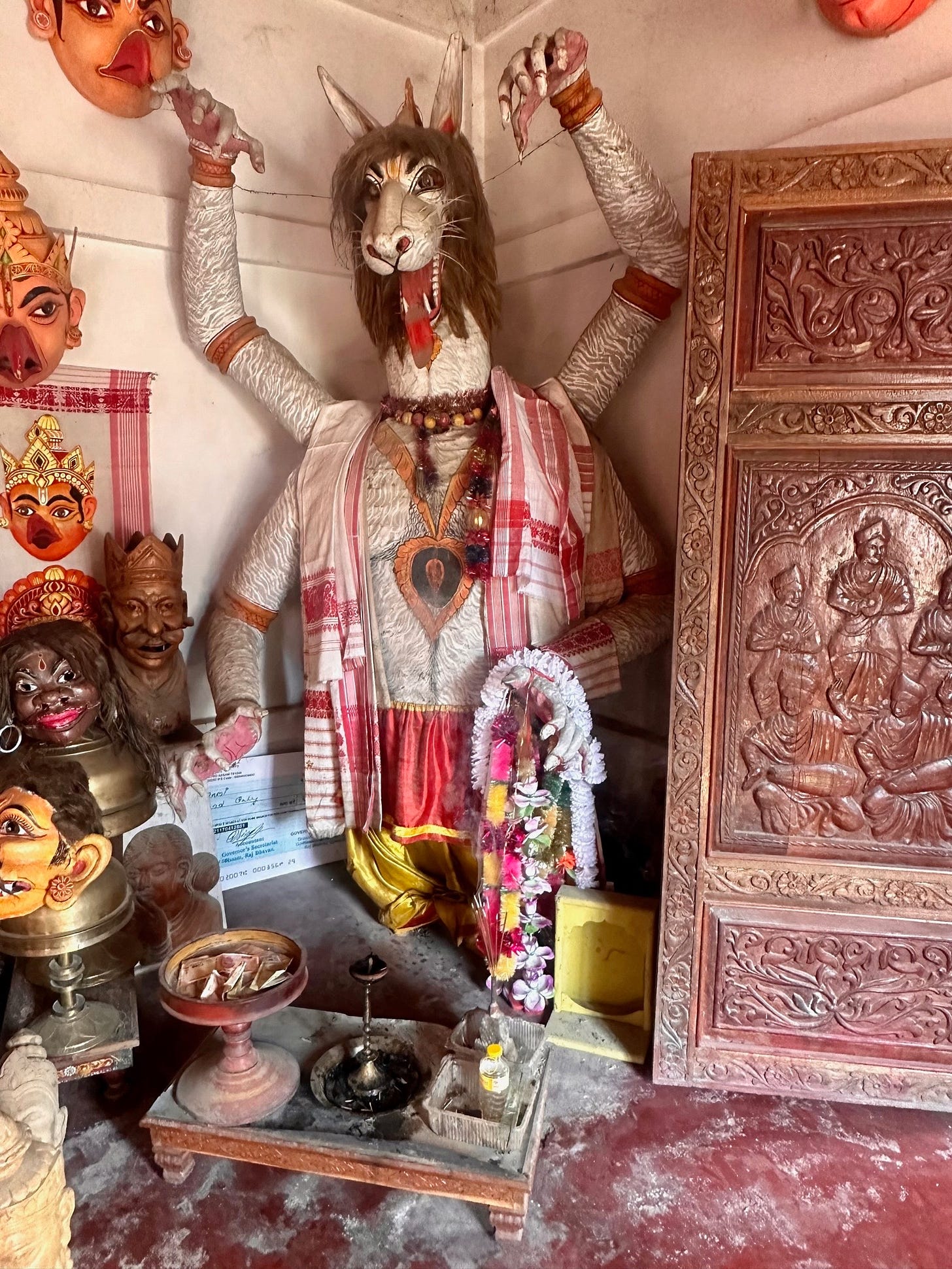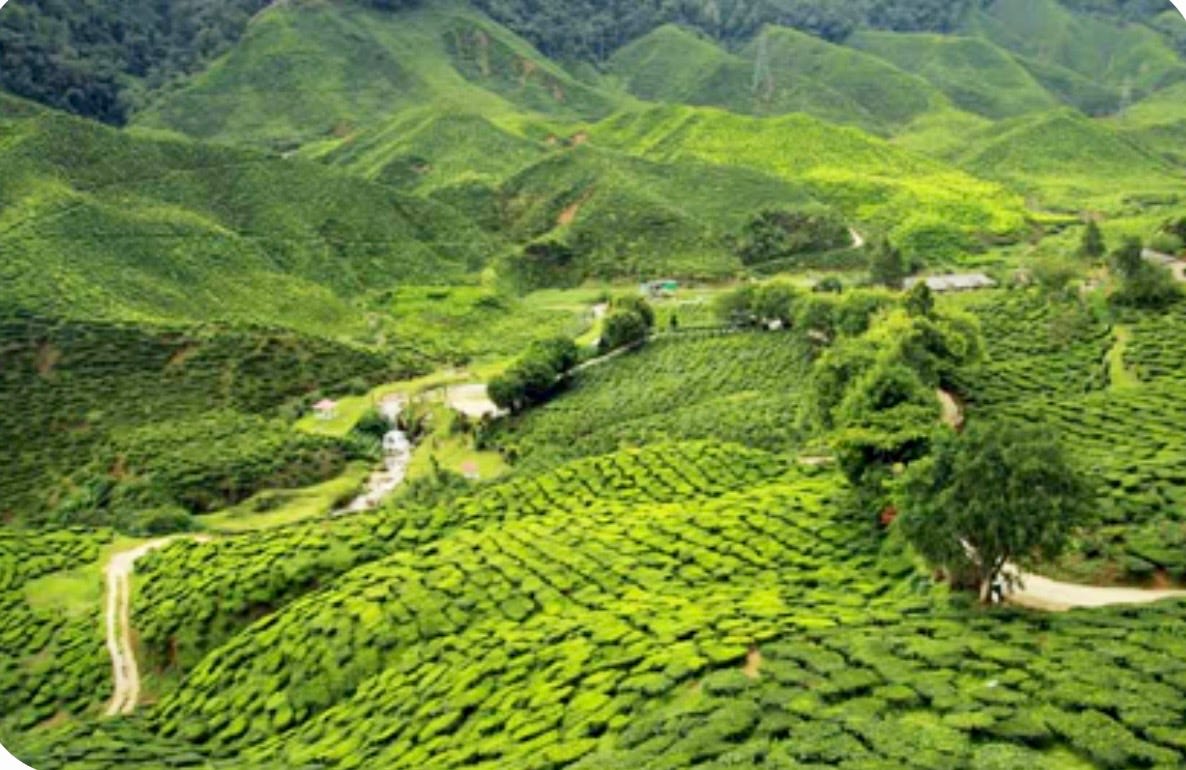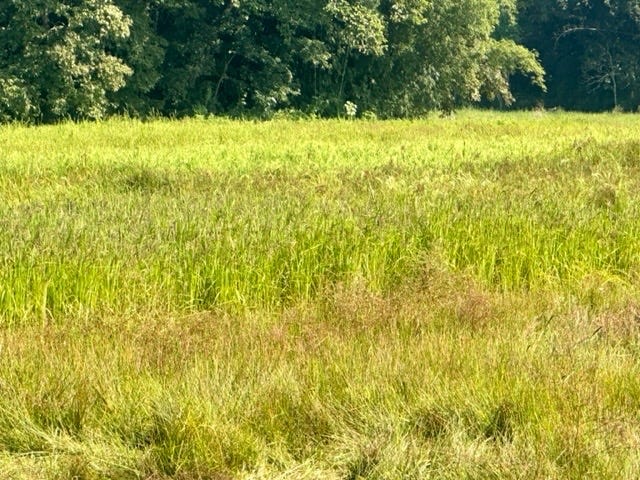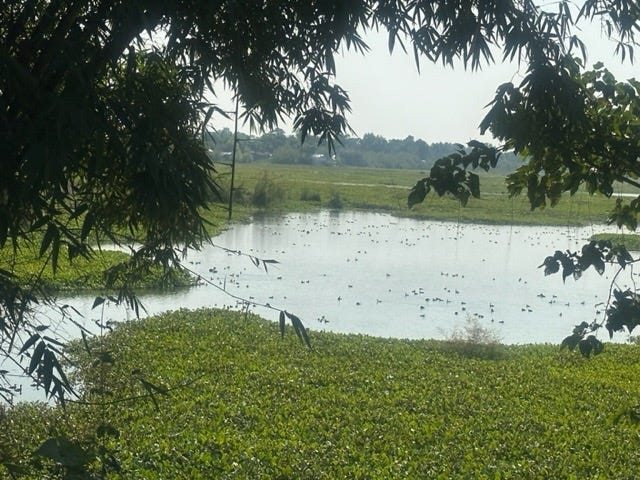#174: A Visit To The Largest River Island In The World
And Bringing Your Story To Life Through Dialogue
There's only one way to respond to changes in travel plans – embrace them.
When we were redirected by protestors outside Mokokchung village in Nagaland, we seized the opportunity to stay in Kaziranga Tea Estates and to visit Majuli Island, both not originally on our itinerary.
On Saturday we left behind the hills of Nagaland and drove to Jorhat, a district of Assam where we stayed in the Kaziranga Tea Estate for two nights. No visit to Assam is complete without a stay in a tea estate.
“Did you know that tribal Indian were already drinking tea before British learned about it and made it the world famous drink?” Asked our guide.
“I thought British brought tea to India from China.”
“British did try to grow Chinese tea in India but Chinese plants cross-pollinated with Indian plants and experiment was considered a disaster. Did you know Ma’am, that tea plants are a variety of Camilla?”
“No, I didn’t. So, are you saying tea was already growing in India?”
“Yes Ma’am. Singpho tribe in Arunachal Pradesh was already cultivating tea. In early 1800, Robert Bruce from Scotland visited the tribe and was given a drink. He liked it so much that he asked the chieftain for a sample which he sent for testing. It turned out to be of highest quality tea.”
“Lucky for him.”
“But Robert Bruce died shortly afterwards. His younger brother Charles Bruce continued his efforts and became one of the key figures to establish tea industry in India. From Assam tea production fanned to Darjeeling and Kerala.”
“We were in Darjeeling last year and bought lots of tea there. It’s so flavoursome.”
“Yes, ma’am. Each area has its own speciality. Darjeeling tea is know for it’s flavour whereas Assam tea is known for flavour and strength.”
Next day we caught a ferry from Nimati Ghat to go to Majuli Island. The trip took us one hour. The vastness of the Brahmaputra River gives the sensation of being on an ocean rather than a river, particularly during the rainy season.
"The ferry captain must navigate carefully," our guide emphasized, "as the river alternates between significant depth and shallower sections, with a formidable undercurrent."
Upon reaching the other side, our new driver, Raman, greeted us. He treated us to an initial tour of the island. Majuli's landscape unfolded, showcasing lush greenery adorned with bamboo trees, swaying palms, and expansive wetlands. Its fertile soil supports a diverse array of crops, from rice and mustard to various vegetables. Majuli is famous for growing three kind of rice - white, red and black rice. Island people make beer from all three kind of rice. Beer made from black rice has medicinal qualities.
Majuli Island is unique in many ways. Firstly, it's the world's largest river island, naturally formed between the Brahmaputra to the north and the Burhidihing to the south. Although it once spanned 1300 sq km, erosion has reduced it to 352 sq km, still substantial enough to be its own district with 144 villages and a population exceeding 150,000.
Second, for five centuries, Majuli has been the cultural capital and cradle of Assamese civilization. Numerous Satras (monasteries) here have played a vital role in preserving and promoting traditional Assamese arts, music, dance, and literature, making it a focal point for neo-Vaishnavite culture.
Third, Majuli is a haven for birds. The wetlands surrounding the island are essential for migratory birds, some traveling from as far as Siberia, making it a paradise for birdwatchers. We spotted stork, kingfisher and egret but Raman told us that visitor come here to see purple moorhen and white-breasted waterhen.
Our first stop was Auniati Satra, the oldest and the largest monastery on the island. It was believed to be established in 1653 CE by an Ahom king Jayadhwaj as a result of socio-religious and cultural movement initiated by Shankaradeva (born in 1449 CE).
The monks in the monastery are celibate and they avoid every worldly affairs to concentrate entirely on Krishna. At the time we visited the monks were preparing for a big 3 day festival called Ras Lila where dances based on Lord Krishna’s life are performed.
We visited one of the monk’s quarters and talked to him. He was five years old when he joined the monastery. “I go to school during the day,” he told us, “in the evenings I work inside the monastery and learn to dance.” All the young monks learn to dance and perform in the main hall in front of the main deity Lord Krishna.
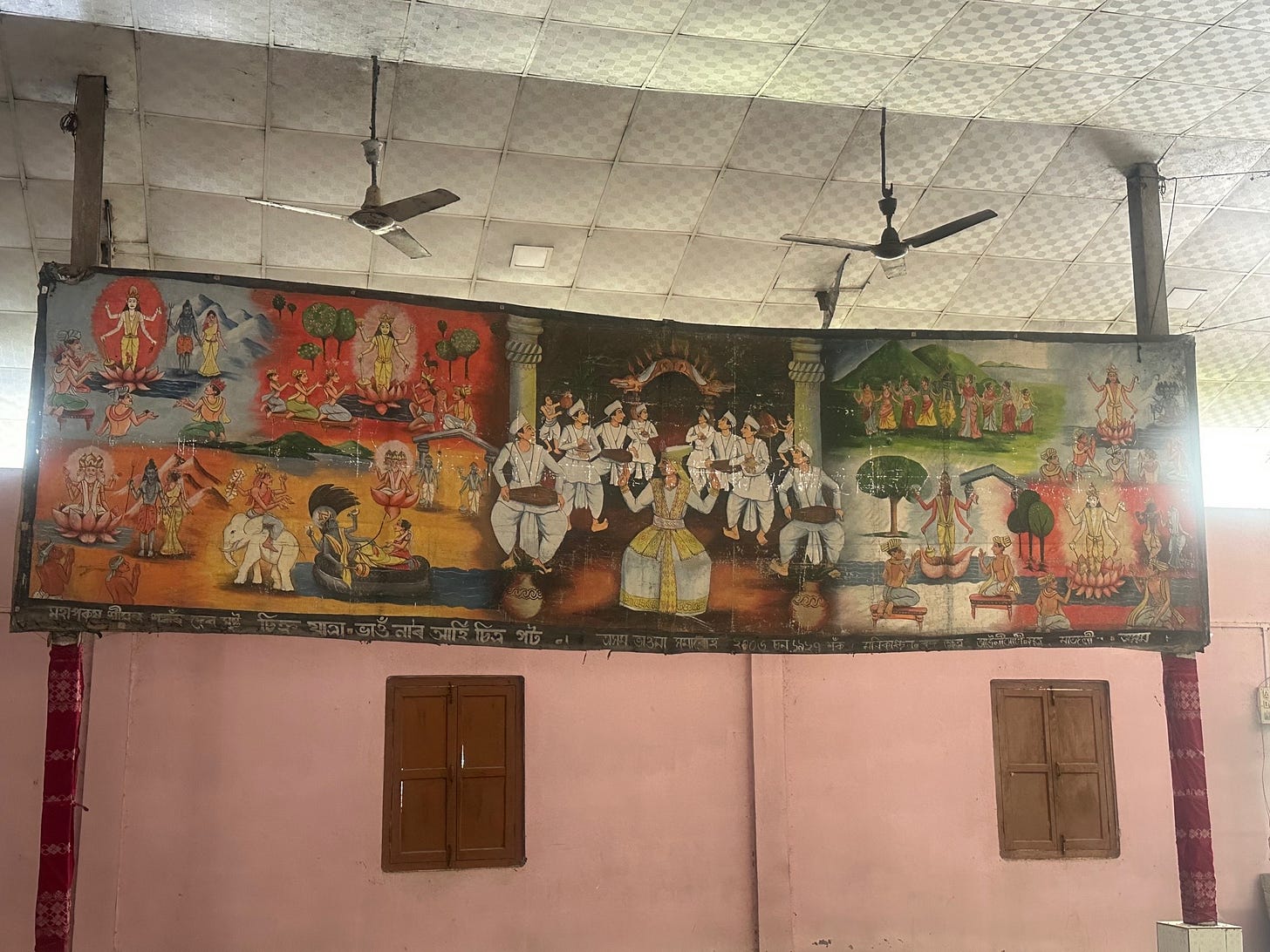
The next monastery we visited was Samaguri Satra Sukumar, which is world famous for making masks. It was established in 1663 by Sri Sri Chakrapani, the grandson of Sankaradeva. This unique art form is being passed from generation to generation and has recently made its way to the British Museum.
The son of the master mask artist demonstrated how the various masks worked by wearing them on himself. “The mask has to fit the person so that they can move the jaw and eyelids. In the first mask the jaw was fixed. Overtime, with little improvements we have made the jaw and eyelids movable.”
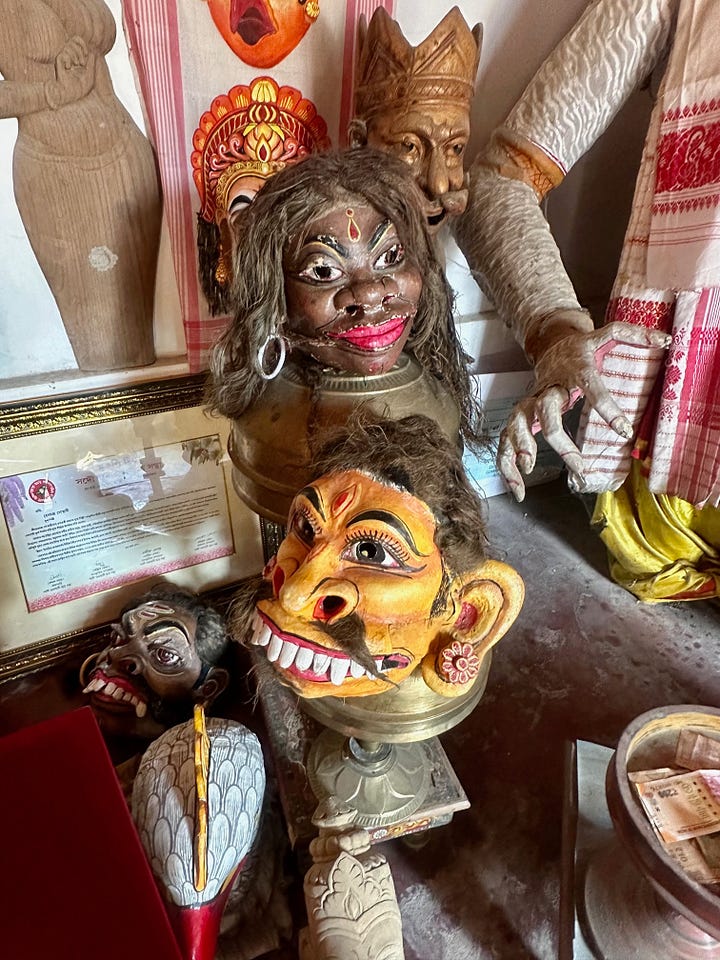
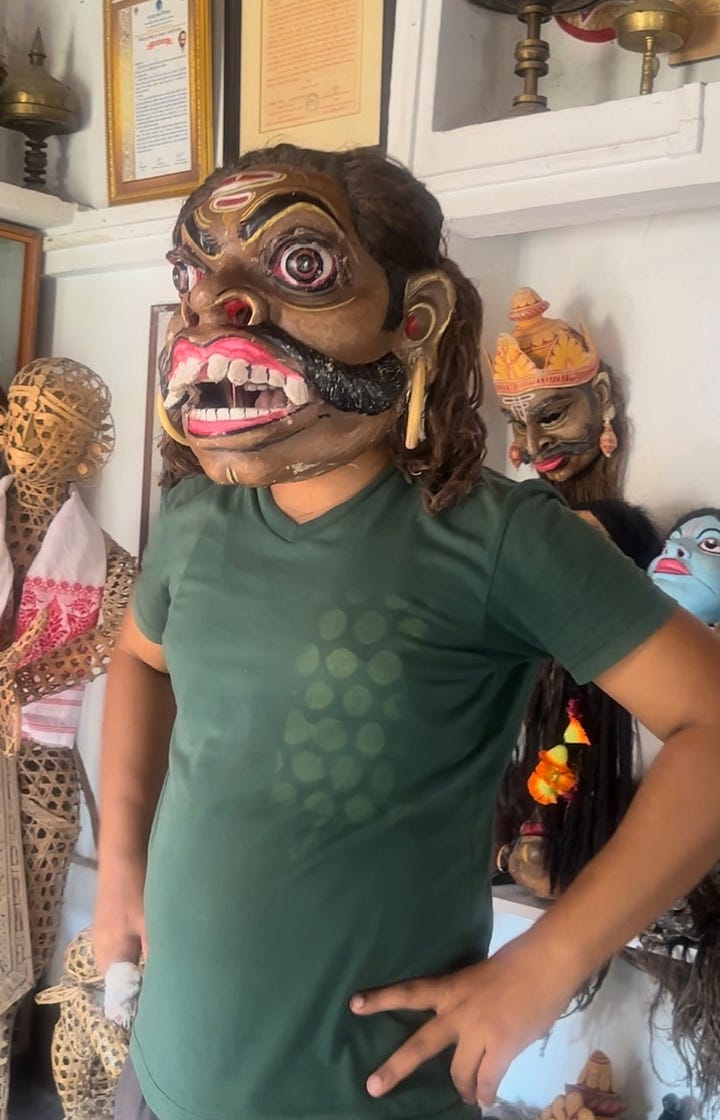
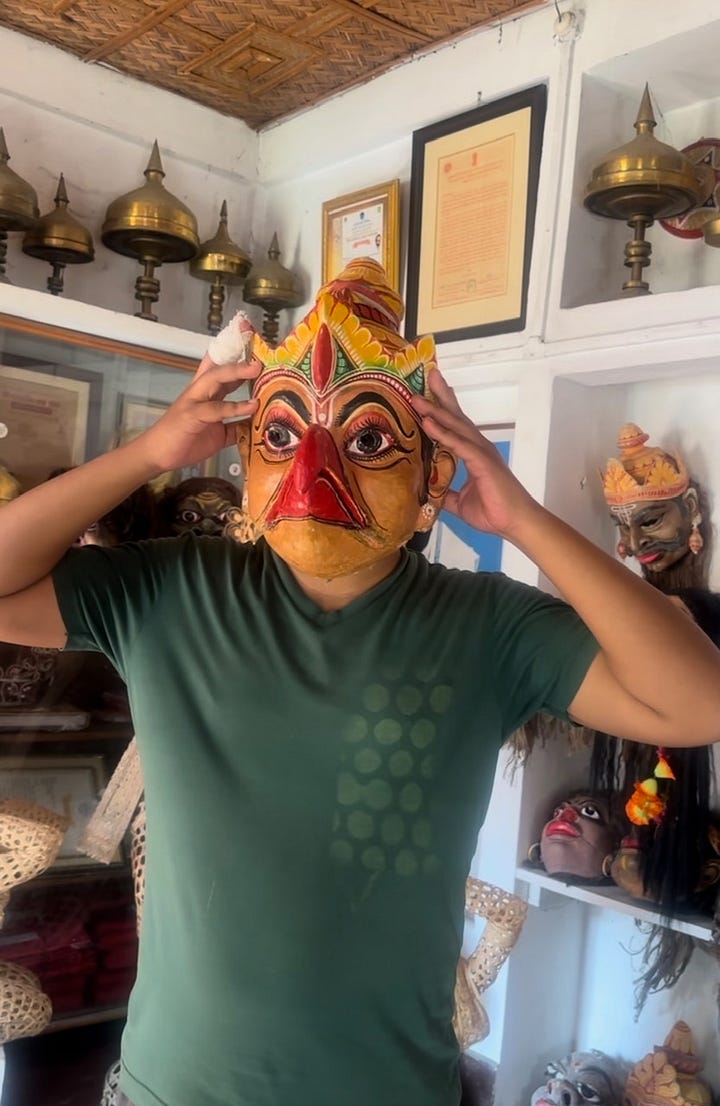
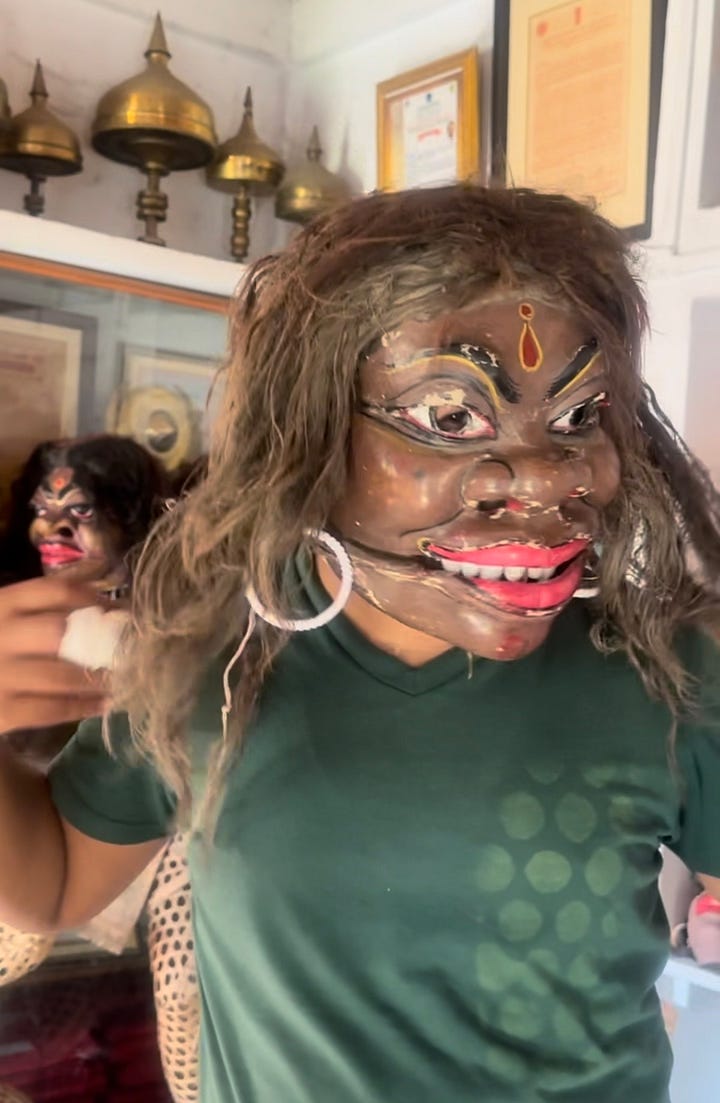
In the afternoon, we explored a Mishing village, home to the Mishing people—an indigenous ethnic group with roots in Tibet and Burma, now residing in the Northeastern states of Assam and Arunachal Pradesh. Some Mishing individuals migrated to Majuli Island and settled here.
These are simple folks, leading uncomplicated lives.
Upon reaching the village, we noticed a woman painting a gate green at the first house. We paused for a conversation with her, and by the time we returned, the entire gate had been beautifully painted.
A few steps away, another woman was diligently preparing a loom for weaving. She shared that it takes her 2 to 3 days to set up the loom, carefully threading and stretching the lengthwise fibers. In the neighboring home, another woman skillfully wove 20 'gamshas' simultaneously. A 'gamsha' is a type of cloth.
Pointing to an old man sitting outside a house, our guide remarked, "This is the village elder; he was once the headman of the village council."
Most of the houses were crafted from bamboo and built on stilts, a practical measure to prevent rainwater from entering during floods.
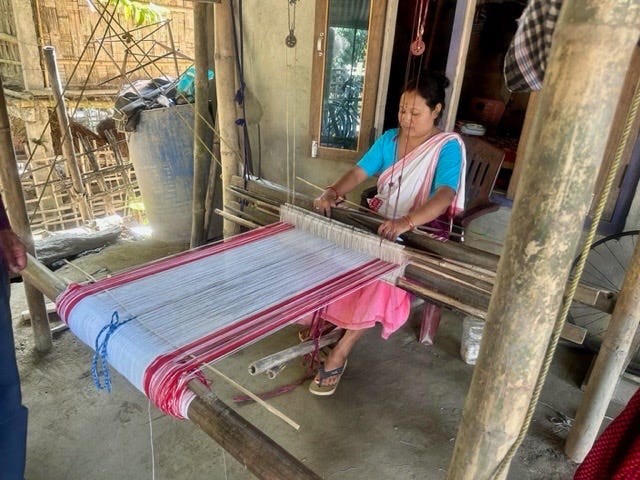
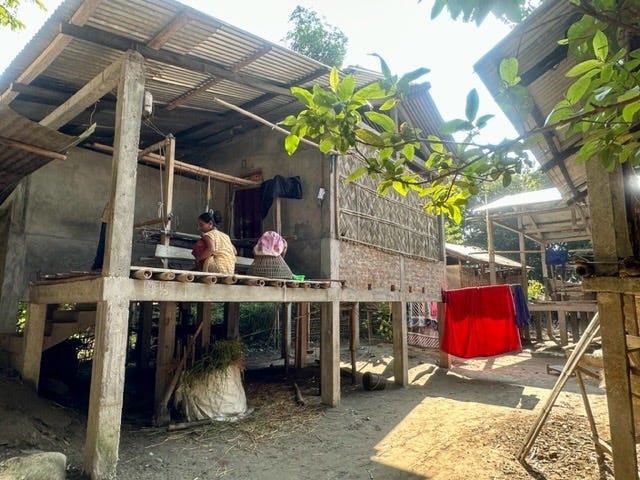
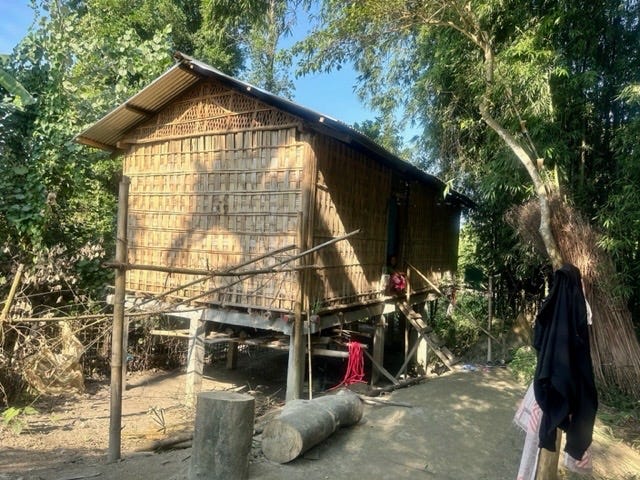
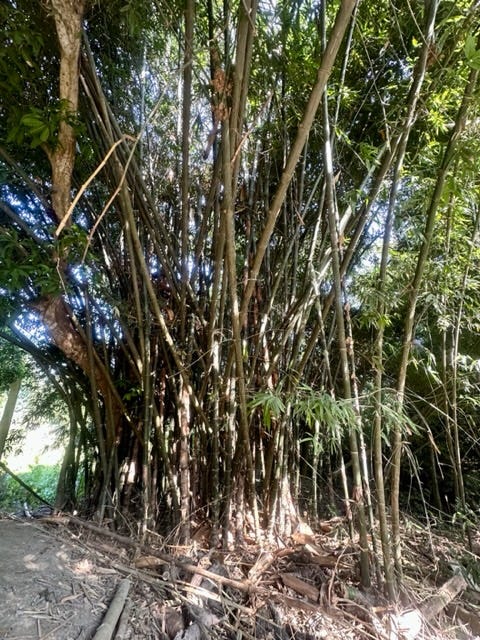
These two days turned out to be the most memorable of our trip. We encountered places and met people we wouldn't have crossed paths with if our travel had gone as initially planned.





